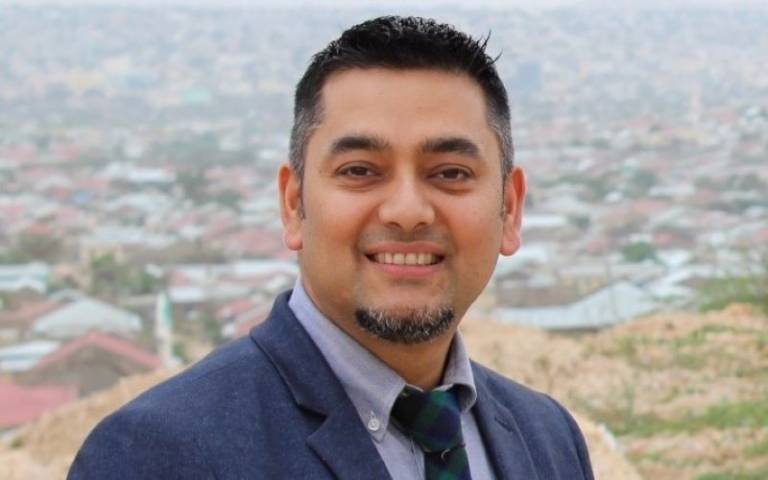Opinion: Education in Afghanistan was a battlefield long before the Taliban returned
8 September 2021
Insecurity, corruption and weak governance will continue to be major barriers for Afghan children in accessing education, says Dr Tejendra Pherali (UCL Institute of Education).

In the two decades that followed the fall of the Taliban regime in 2001, significant progress was made in education in Afghanistan. By 2017, the number of schools had more than quintupled. School enrolment, from grades one to twelve, had reached 9.2 million pupils, 39% of whom were girls. This represented almost a tenfold rise in enrolment, up from just under one million children (almost none of whom were girls) in 2001.
The recent return of the Taliban has therefore raised serious concerns about the future of education – girls in particular. But to understand the prospects, you first have to understand what has come before.
In 2016, we conducted a small-scale study to examine how violent campaigns carried out by the Islamic State (IS) had affected education in Afghanistan. The defeat of IS in Syria and Iraq had pushed Islamist fighters to seek sanctuary in poorly governed regions of Afghanistan.
We interviewed dozens of educators, politicians and teachers in Kabul and Jalalabad, the provincial centre of Nangahar province, which is to the east of the capital. We wanted to understand how these complex security dynamics were affecting education.
We found that Afghanistan’s schools were caught between deteriorating security conditions, weak governance and systemic corruption. Rebel groups, including IS and the Taliban, were capturing schools and educational spaces to extort resources and radicalise young people. This was happening throughout the vast rural areas that remained largely under the control of the Taliban, at the same time as the US-supported government was in power in Kabul.
These rebel groups were indoctrinating students into hating both the west and the Afghan government institutions on the grounds that they promoted western values by repressing Islam and Afghan cultural identity. They also encouraged young people to carry out attacks on the US-led coalition forces.
National governments and international communities supporting education in conflict-affected contexts generally view it as a vehicle for peace and sustainable prosperity. Education is indeed a means of empowering learners. It creates new visions and employment opportunities to help students secure a stable livelihood.
This, however, is a slow process. And education systems are rarely neutral. For education to lead to social change, long-term political commitment is crucial.
Without ensuring equity in access and outcomes, along with conflict-sensitive planning and delivery, increased access to schools alone cannot promote peace and social justice. On the contrary, as research has shown, education can be used to create and fuel conditions of violent conflict.
It does so by hardening socioeconomic inequalities, and promoting values and ideas that are perceived to be repressive and a threat to local ethnic, religious and cultural groups. Imported models of education are seen to be imposed on these groups.
Several factors play into the ways in which education can fuel conflict. These include unequal access to education; biased history being promoted for political purposes; textbooks being manipulated; and hatred against certain groups being encouraged. All of these issues have contributed to Afghanistan’s educational development.
While school enrolment – and university attendance - has increased in Afghanistan over the last two decades, educational progress has largely been concentrated in urban areas. This meant that even as urban populations were able to use education as a ticket out, rural communities were left open to attacks from the Taliban and IS.
Despite the developments in education, few inroads were made into mending divisions between the Pashtun-dominated Taliban and different minority ethnic communities such as Hazaras, Tajiks and Uzbeks, who have long faced persecution. Education could have been a significant tool for national reconciliation through recognition of ethnic, religious and linguistic diversity.
For the duration of the western military presence in Afghanistan, the Kabul government clashed with conservative forces, criminal groups and local warlords, including the Taliban, over control of the education system, resources and the curriculum to girls’ education.
Key education appointments were repeatedly made not on the basis of merit, but to consolidate power and influence in the provinces. There have been reports of widespread corruption across the school sector. Consequently, large amounts of education funding served the personal interests of the political elites rather than benefiting most deprived Afghan communities.
The Taliban’s return to power and the departure of western forces has put an end to the radical political discourse that has served these militant groups for 20 years, in the sense that the Taliban have justified their struggle as resistance to western occupation.
Nevertheless, the three problems we identified in our research – insecurity, corruption and weak governance – will continue to be major barriers for Afghan children in accessing education. Even though the Taliban have expressed a commitment to education for girls and to employment rights for women, it remains to be seen whether their ideology has really changed. Only time will tell whether education policies and content in the new Taliban era will promote ethnic and religious tolerance, cultural diversity and global citizenship.
The safety of learners and their schools will also depend on how the Taliban govern the country and the new conflict dynamics, involving ethnic groups and ISIS-K, an extremist group that refutes the Taliban’s supposedly moderate political ideology.
This article first appeared in The Conversation on 8th September 2021.
Links
- Original article in The Conversation
- Dr Tejendra Pherali’s academic profile
- UCL Department of Education, Practice and Society
- UCL Institute of Education
 Close
Close

